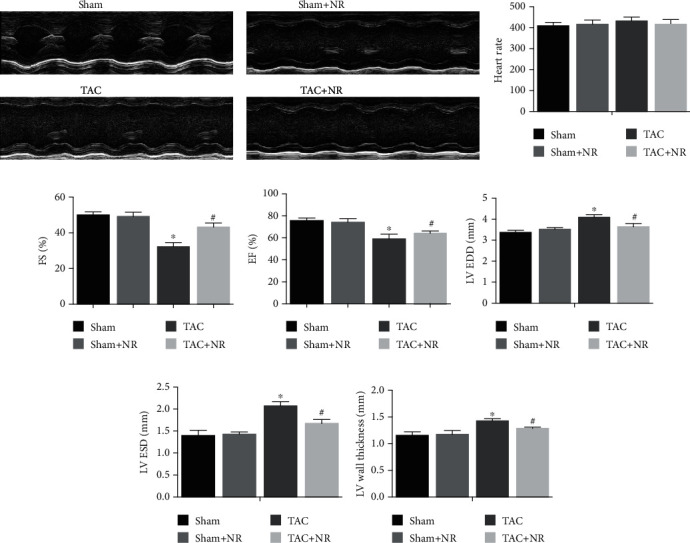Figure 2.

NR significantly alleviates the cardiac dysfunction caused by TAC. (a) The M-mode echocardiograms of the midventricle at the level of the papillary muscles. (b) There was no significant difference in mouse heart rate (HR) among groups (P > 0.05). (c, d) NR treatment significantly improved the left ventricular systolic function of TAC mice (EF: 64.3 ± 2.1 vs. 59.2 ± 4.2; FS: 43.2 ± 2.3 vs. 32.3 ± 2.2, P < 0.05). (e–g) NR treatment significantly improved TAC-induced changes in cardiac structure (LV EDD: 3.644 ± 0.154 vs. 4.096 ± 0.122; LV ESD: 1.676 ± 0.087 vs. 2.071 ± 0.096; LV wall thickness: 1.288 ± 0.023 ± 1.428 ± 0.040, P < 0.05). HR: heart rate; EF: ejection fraction; FS: fractional shortening; LV EDD: left ventricular end-diastolic dimension; LV ESD: left ventricular end-systolic dimension. ∗P < 0.05 vs. sham group; #P < 0.05 vs. TAC group.
